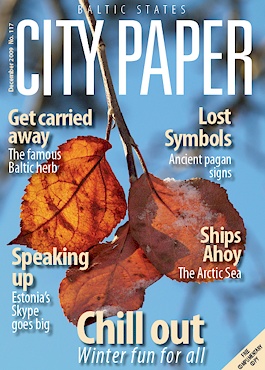The Baltics' ancient tradition
Bonfires, beer, dancing, jumping over fires and all-night-long parties are a central theme to Midsummer celebrations in the Baltics, marked annually across the region.
In Lithuania the holiday is celebrated as Saint Jonas' Festival (or Rasos), while in Estonia it is known as Jaanipaev (John's Day).
In Latvia the celebration of the summer solstice festival, or Jani, remains the most ancient and beloved holiday, marked with great enthusiasm throughout the country.
Celebrations typically kick off on June 22, continuing with Ligo-Day on June 23 and Jani the following day – June 24th.
Midsummer-related traditions pre-date Christianity and in pagan times were celebrated as feasts of fertility.
A remnant of those ancient times is the tradition of amorous couples going into the forest together to hunt for the mystical fern flower, said to bloom only at Midsummer and believed to bring love and happiness to those who find it.
Most Balts leave the cities enmasse to gather around ceremonial bonfires in the countryside to welcome the arrival of summer in the company of friends and family.
Founding member of Latvian folklore group Auli Mikus Cavarts said music is a central uniting element during Midsummer celebrations throughout the Baltics.
"Everybody comes together to participate. These sorts of traditional songs are made so everyone can participate. It makes a special mood and feeling," he said.
Midsummer celebrations roughly correspond to the astronomical beginning of summer.
The period marks a change in the farming year, specifically the break between the completion of spring sowing and the hard work of summer hay-making.
The evening of June 23, which marks the longest day of the year, is the highlight of the holiday. According to legend this is the one night of year that you must not sleep.
People gather around fires, girls pick flowers to make themselves delicate wreaths while in Latvia men called Janis don huge wreaths of oak leaves.
By Kate McIntosh
Photo credit Sandra Iriste
In Lithuania the holiday is celebrated as Saint Jonas' Festival (or Rasos), while in Estonia it is known as Jaanipaev (John's Day).
In Latvia the celebration of the summer solstice festival, or Jani, remains the most ancient and beloved holiday, marked with great enthusiasm throughout the country.
Celebrations typically kick off on June 22, continuing with Ligo-Day on June 23 and Jani the following day – June 24th.
Midsummer-related traditions pre-date Christianity and in pagan times were celebrated as feasts of fertility.
A remnant of those ancient times is the tradition of amorous couples going into the forest together to hunt for the mystical fern flower, said to bloom only at Midsummer and believed to bring love and happiness to those who find it.
Most Balts leave the cities enmasse to gather around ceremonial bonfires in the countryside to welcome the arrival of summer in the company of friends and family.
Founding member of Latvian folklore group Auli Mikus Cavarts said music is a central uniting element during Midsummer celebrations throughout the Baltics.
"Everybody comes together to participate. These sorts of traditional songs are made so everyone can participate. It makes a special mood and feeling," he said.
Midsummer celebrations roughly correspond to the astronomical beginning of summer.
The period marks a change in the farming year, specifically the break between the completion of spring sowing and the hard work of summer hay-making.
The evening of June 23, which marks the longest day of the year, is the highlight of the holiday. According to legend this is the one night of year that you must not sleep.
People gather around fires, girls pick flowers to make themselves delicate wreaths while in Latvia men called Janis don huge wreaths of oak leaves.
By Kate McIntosh
Photo credit Sandra Iriste




